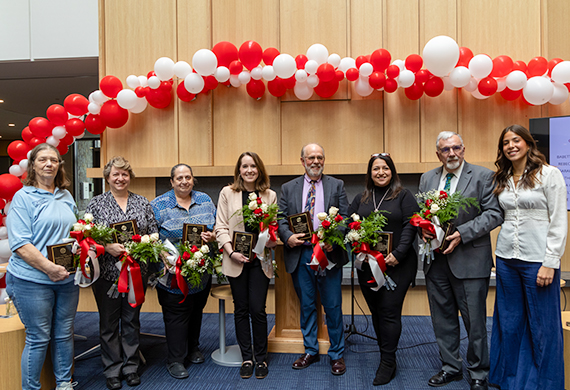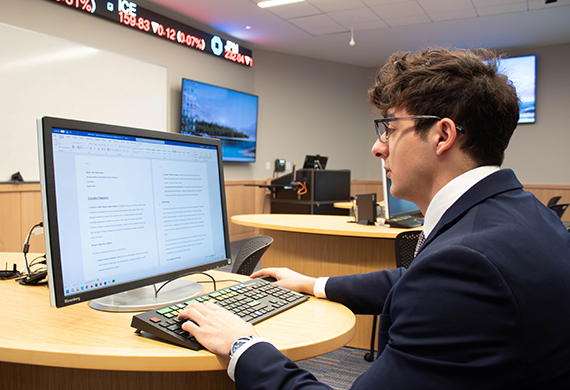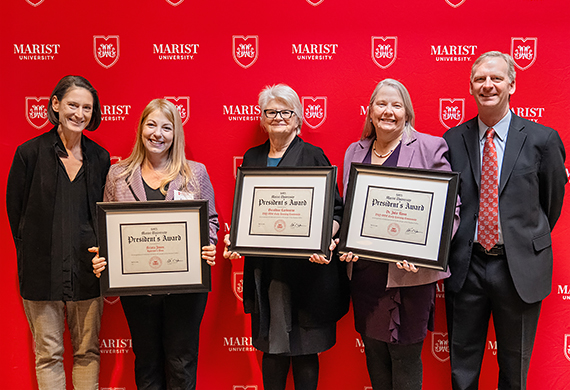College Launches Movement Analysis Laboratory for Teaching and Research
Lab features an artificial intelligence-enabled system for high-tech analysis of gait and movement, one of only three in the tri-state area

Doctor of Physical Therapy Program faculty work with a patient.
October 24, 2018—In another decisive step in its commitment to allied health education, Marist College has opened a Movement Analysis Laboratory. Part of the College’s Doctor of Physical Therapy Program (DPT), this state-of-the-art facility features an artificial intelligence-enabled (AI) system for analyzing movement. Marist is just one of three locations in the tri-state area with such a system.
“From the very beginning of planning and launching the DPT Program, being at the forefront of technological advances was always front and center,” noted Dr. Claudia Fenderson, Director of the DPT Program, which enrolled its first cohort of students in January 2018. “We want to train practitioners who understand movement analysis at the highest level and who have direct experience with the best technology in the world.”
The Movement Analysis Laboratory is a teaching and research facility used for the study and instruction of the biomechanics of normal and pathological movement patterns. The BTS GAIT LAB system is housed within the lab and features 10 3D-infrared cameras, 8 force plates contained within a computerized walkway, a 12-channel wireless electromyography (EMG), and 2 high definition video cameras used for movement analysis.
“This system supplies quantitative information and the objective data needed to analyze a person’s walking and movements in ways that are not measurable with traditional clinical exams alone,” explained Clinical Assistant Professor Francine Sage-King. “And it does all of this in real time.”

The BTS GAIT LAB integrates and synchronizes the subject’s joint motions, forces, muscle function, and video data. The analysis tools simultaneously compare, frame-by-frame, limb movements and muscle force distribution. This makes it an invaluable tool for both educational and research use as it provides a vast amount of biomechanical information that is unattainable without the use of such equipment.
“Marist physical therapy students are literally working at the cutting edge with this system,” said Fenderson.
Since its installation, the DPT Program has initiated efforts to collaborate both on campus and within the neighboring community for opportunities to utilize the equipment. One such endeavor is working with Marist's own Athletic Department.
“This collaboration between the Doctor of Physical Therapy Program and Athletics has the potential of offering great benefit to our athletes,” said Tim Murray, Director of Athletics. “The capability for more in-depth analysis of sports biomechanics for injury prevention is something we are very excited about. It will be a tremendous asset to both our student athletes and coaches.”
The DPT Program is also in the early stages of partnering with Dr. Fabio Danisi, Associate Director of Neurology at Mid-Hudson Regional Hospital, to investigate gait and movements changes in patients with Parkinson's disease.
For more information about the Marist Doctor of Physical Therapy Program click here.



